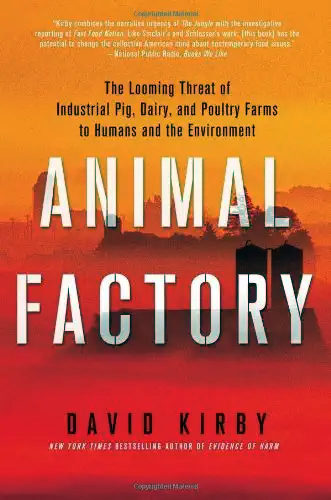Way Down Upon the Swinee Rivers
There are a number of rivers in eastern North Carolina that are extremely impacted with the pollution (feces and urine) being discharged from industrial hog and poultry operations. The amount of swine waste being stored in cesspools (lagoons) and poultry waste stored near and applied to heavily ditched farm fields that connect directly to waters of the state, is overwhelming. It is far more than can safely fertilize crops without running off into our wetlands, streams, creeks and rivers. It is far more than enough to degrade and ultimately destroy many of the rivers of eastern North Carolina.
In North Carolina, the rivers most seriously impacted with hog and poultry pollution are the Neuse, Tar-Pamlico, Cape Fear, Northeast Cape Fear, Waccamaw, Lumber and the New. All reflect very similar impacts as the Neuse, which is discussed in detail below. Also discussed is the Black River. This River is often falsely cited by the animal industry as having a heavy concentration of hogs, chickens and turkeys, without showing any of the water pollution impacts attributed to them.
Additional information regarding fish kills can be found on this website by clicking the Fish Kills button on this page's heading.
The Neuse

The nearly 2 million year old Neuse River is a majestic flowing river that has its beginnings above Durham, NC, where the Eno and Flat rivers converge. The Neuse, whose Native American name means peace, is a vital part of a large and important estuary, the Albermarle-Pamlico Sounds. This estuary is reported to be our country's most important fish nursery.
The Neuse's current is fast moving for 150 miles from its source until it reaches western Craven County. There it becomes a slow-moving, brackish estuary that continues for another 40 miles before reaching the Pamlico Sound.
At New Bern, the Neuse widens to one mile, shortly downstream to three miles, and at its mouth, it becomes the widest river in America with a distance of over six miles.
What makes the Neuse and Albermarle-Pamlico Sounds a terrific fish nursery are the outer banks. These banks dam in, among others, the Neuse and Tar-Pamlico Rivers, creating what is more lake than flowing river. This lake-like effect is where pollution accumulates and accelerates its destructive forces. The number one source of pollution is nutrients, principally, nitrogen. While small amounts of nitrogen can be helpful, in large amounts it literally destroys a river. Nitrogen is a derivative of fertilizer. Whether that fertilizer is from human or animal sources is of no significant difference.
There are 1,000,000 people, over 2,000,000 hogs, and unknown millions of chickens and turkeys in the Neuse River watershed. All contribute to the pollution of the river. However, it wasn't until the animal industry's explosive development throughout eastern North Carolina that the Neuse showed signs of serious decline.
For the past 30 years, the horrific runoff to surface waters from these animal factories has been well documented. Moreover, many scientific studies have concluded that the animal industry in North Carolina is a principal contributor of nitrogen pollution. What is poorly understood, is that most of the nitrogen pollution entering the Neuse watershed comes, not from surface discharges, but through the air as ammonia gas. The Neuse receives substantially more ammonia (nitrogen) during the summer as it is impacted by ammonia produced upwind by a number of heavily concentrated animal factories in counties to its southwest.
Ammonia is a gas that easily travels through the air. As it rises from chicken and turkey manure present in the confinement buildings and from the lagoons and spray fields of hog factories, it travels between a few feet and 100 miles. Then, 100% of it settles back to the ground. It is an extremely volatile and toxic form of nitrogen that is especially harmful to rivers and streams. It causes algae to grow and consume nearly all the oxygen fish need to survive. It also contributes to the growth of fish killing organisms like Pfiesteria, a blood sucking one cell animal that has attacked both fish and humans.
No river in America has suffered the number of fish kills as has the Neuse. Since 1991, over two billion fish have perished in the Neuse due to nutrient pollution. Most of the fish died with open bleeding lesions covering their bodies. However, it's not just the fish deaths that are of concern. In 1995, the Neuse was closed for two weeks due to threats to human health. This was extensively reported and covered in the books, And the Waters Turned to Blood, Rodney Barker, 1997,and Animal Factory, David Kirby (both available on Amazon).
For the Neuse and the Black Rivers, and all the other rivers in eastern North Carolina, time is running out. Technologies to replace the industry's polluting lagoons and spray fields are available and affordable. All that
is lacking in North Carolina is the legislative will to make it happen.
It is noted that most all the hogs in North Carolina are owned by a Chinese based corporation, WH Group. It is headed by Mr. Wan Long. The WH Group is the sole owner/operator of Smithfield Foods. It is a highly profitable corporation with sufficient resources that could easily be used to solve the problem.
The Black River

Parts of the Black River, and maybe the entire river, are running out of time. The river originates in Sampson County with the confluence of the Great Coharie and Six Forks Creeks. It runs in a southeasterly direction for approximately 60 miles before joining the Cape Fear about 15 miles northwest of Wilmington, North Carolina.
In the upper reaches of the Black River, swine facilities are heavily concentrated next to the wetlands, streams and creeks that feed it. Like other rivers that flow directly to the ocean, pollutants discharged into the Black River along the way are, to a large extent, delivered downstream to the ocean. The Black River is also more dramatically sloped. This promotes a more rapid flow of water and pollutants downstream and out to the ocean.
Many of North Carolina's rivers receiving swine pollution, like the Neuse and Tar-Pamlico, are not so fortunate. These, often slow moving rivers, discharge into the Albemarle-Pamlico Sound where their pollution discharges stagnate and cause serious water quality problems.
The Black River is listed as an Outstanding Resource, indicating high water quality. The swine industry often points to this as proof that swine facilities do not pollute surface waters. Can this be explained?
It can and the answer lies in the geography. Where the swine facilities are located in the Black River watershed, their pollution impacts are clearly visible. Scientists taking water samples have found that the tributaries in the Black River headwaters are loaded with macrophytes and have low levels of dissolved oxygen. Aerial flights and photographs show that in the upper region of the Black River, many of the wetlands, streams and creeks are heavily matted with excessive vegetative growth, a clear sign of nutrient (fertilizer) pollution. Moreover, the Black River remains unpolluted by other sources. The swine and poultry facilities are the only major sources of these nutrients.
Locals report that the vegetative growth began to appear in the upper reaches of the Black River after the swine industry set up their operations. It is also reported that some of the river's 80 year old white cypress trees are now dying and that fishing near where the swine facilities are located is in decline. North Carolina scientists are also sampling the ditches that drain the swine facilities at the headwaters of the Black River. Their data on phosphorus from soil samples reflects excessively high levels of contamination—some well above the state’s “stop phosphorus application” guideline level.
In an article published in the Fayetteville Observer on December 17, 2003, three well known and respected scientists from North Carolina, Drs. Mike Mallin, Larry Cahoon and Bill Showers, were quoted on the issue of swine facilities and their impacts on the Black River.
Showers is a researcher at N.C. State University who has concluded that hog waste is seeping into groundwater and ending up in the Black River. He has been able to isolate an isotope of nitrogen common only to animal waste and follow its path.
In one study, he used monitoring wells to study groundwater under two hog farms separated by a stream that enters Stewart's Creek, which flows into the Black River. The farm fields had been receiving hog waste for at least 20 years, but no artificial fertilizer for at least 10.
Showers found that nitrate concentrations from hog waste increased 1.5 times to 10 times downstream from the farms.
''To say they are not exporting nitrogen is hydrologically impossible,'' Showers said. ''The question is how much exporting, and I don't think we have a really good handle on that at all.''
''We certainly are going to see a change. Whether we will be in real trouble remains to be seen,'' Showers said. ''It is going to take several decades before we realize the full impact of that (hog) industry on the environment.''
The Black River is in good shape now partly because it's fed by deep underground aquifers, Showers said. Mallin added that the stream moves fast enough to flush nutrients out.
Larry Cahoon, a researcher at UNC-Wilmington, thinks the effect of nutrients is already being felt. Cahoon said he has seen dense aquatic weeds in the tributaries of the Black River, an indication of excessive nutrients.
All things considered, the Black River is coping with swine pollution better than most other public waters in eastern North Carolina. But this is not because the swine industry is not polluting it. Rather, it is because the Black River is protected by a filtration system of extensive wetlands and vegetative buffers along its course, including the upper region where most of the swine facilities are located. These wetlands and buffers purify the water of nitrogen fertilizer through a process know as denitrification. The Black River also benefits from another even more significant factor. During periods of low flow, as pollutants from swine operations move down river, they are massively diluted by a significant groundwater discharge from an extremely old and pure underground aquifer. At that point, pollutants that the wetlands and buffers were unable to remove are diluted by a heavy volume of unpolluted water.
The Clock is Ticking




